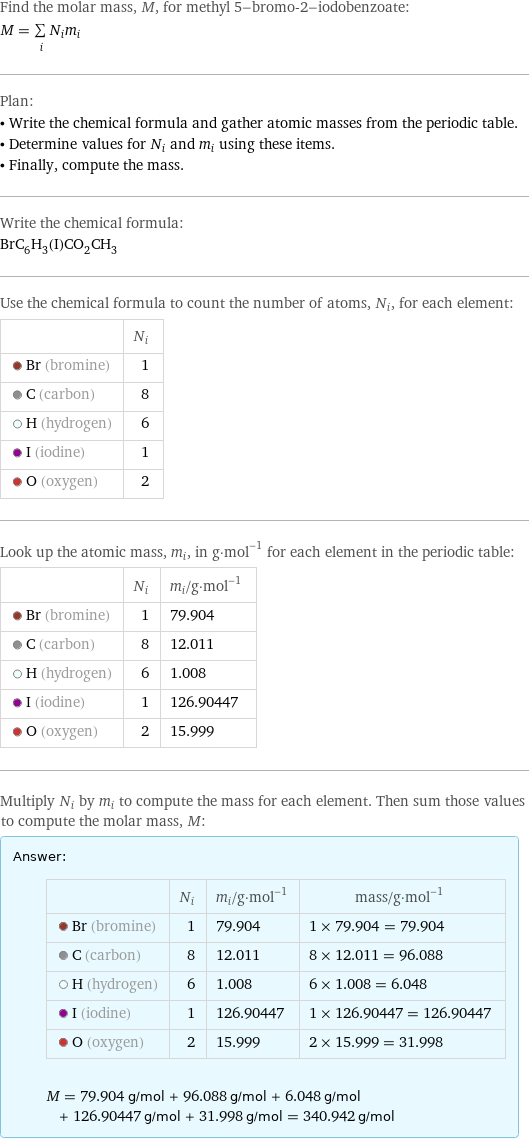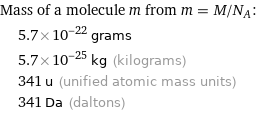Input interpretation

methyl 5-bromo-2-iodobenzoate | molar mass
Result

Find the molar mass, M, for methyl 5-bromo-2-iodobenzoate: M = sum _iN_im_i Plan: • Write the chemical formula and gather atomic masses from the periodic table. • Determine values for N_i and m_i using these items. • Finally, compute the mass. Write the chemical formula: BrC_6H_3(I)CO_2CH_3 Use the chemical formula to count the number of atoms, N_i, for each element: | N_i Br (bromine) | 1 C (carbon) | 8 H (hydrogen) | 6 I (iodine) | 1 O (oxygen) | 2 Look up the atomic mass, m_i, in g·mol^(-1) for each element in the periodic table: | N_i | m_i/g·mol^(-1) Br (bromine) | 1 | 79.904 C (carbon) | 8 | 12.011 H (hydrogen) | 6 | 1.008 I (iodine) | 1 | 126.90447 O (oxygen) | 2 | 15.999 Multiply N_i by m_i to compute the mass for each element. Then sum those values to compute the molar mass, M: Answer: | | | N_i | m_i/g·mol^(-1) | mass/g·mol^(-1) Br (bromine) | 1 | 79.904 | 1 × 79.904 = 79.904 C (carbon) | 8 | 12.011 | 8 × 12.011 = 96.088 H (hydrogen) | 6 | 1.008 | 6 × 1.008 = 6.048 I (iodine) | 1 | 126.90447 | 1 × 126.90447 = 126.90447 O (oxygen) | 2 | 15.999 | 2 × 15.999 = 31.998 M = 79.904 g/mol + 96.088 g/mol + 6.048 g/mol + 126.90447 g/mol + 31.998 g/mol = 340.942 g/mol
Unit conversion

0.34094 kg/mol (kilograms per mole)
Comparisons

≈ 0.47 × molar mass of fullerene ( ≈ 721 g/mol )

≈ 1.8 × molar mass of caffeine ( ≈ 194 g/mol )

≈ 5.8 × molar mass of sodium chloride ( ≈ 58 g/mol )
Corresponding quantities

Mass of a molecule m from m = M/N_A: | 5.7×10^-22 grams | 5.7×10^-25 kg (kilograms) | 341 u (unified atomic mass units) | 341 Da (daltons)

Relative molecular mass M_r from M_r = M_u/M: | 341